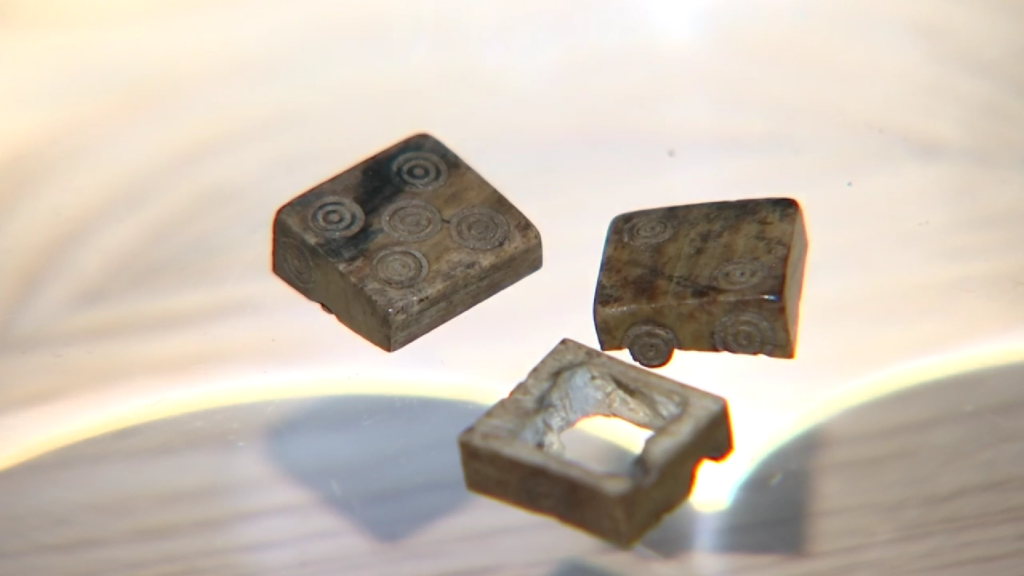Cheating is nothing new, even the Ancient Romans resorted to backhanded techniques to gain the upper hand. A remarkable archaeological discovery, offering an insight into the cheats and tricks of Roman gamblers, has recently been discovered within an object found on the site of a former Gallo-Roman villa in Habay-la-Vieille in Belgium’s Luxembourg province, Belgian broadcaster RTBF reports.
A simple carved bone die hides a gambler’s secret. The inside is hollowed out and filled with heavy liquid metal mercury, presumably in order to rig the dice to roll in the player’s favour. This bizarre specimen is the only example ever found, to date.
The die was first found in the year 2000 by Belgian non-profit ARC-HAB, lead by amateur archaeologist Julien Minet, during a dig at the Mageroy Villa in Habay-la-Vieille. Upon closer inspection, Minet discovered that the die was filled with a strange metal.
“It was during the excavation of a dumping site where we found a lot of things, including this dice loaded with mercury,” she explained. “During the excavation, it was by breaking the die that I immediately saw the mercury and the two parts of the die. We quickly realised that it was a loaded die.”
Ingenious cheats
While first discovered over 20 years ago, the discovery has been brought back into the spotlight by researcher Thomas Daniaux, doctoral student at the University of Fribourg, in Switzerland. His doctoral thesis, entitled “Jouer en Roman Gaul” (Games in Roman Gaul), researched the dice and board game traditions of Gaulic people, and even how they sought to cheat.
“We already knew of dice rigged with lead,” explained Thomas Daniaux. “On the other hand, dice with mercury, it was the very first of its kind for Roman Antiquity, and even all Antiquity.”
According to Daniaux’s research, the cheater could use the liquid metal to ensure that the dice tipped to the desired side. This could be altered depending on how the player made the mercury flow within the die.
For example, if a player wanted to roll a 5, he would tilt the dice so the mercury weighed on the face opposite, the 2. This would make the 2 side heavier, and the 5 side heavier, reliable tipping the die 5-side up.
Related News
- Human fossil found in Spain could be 1.4 million years old
- 80 kilometre archaeological site in West Flanders
Dice games were popular in Rome, played by almost all social classes. Games took place on the streets, homes, or even rich palaces and villas. With cash often usually on the line, some Romans sought to make their dice, also known as tesserae, off-balanced, asymmetrical, or even weighted.
Romans were no stranger to cheating. In fact, in excavations of Roman dice found in the Netherlands, 24 of the 28 dice found were found to be asymmetrical. This is believed to be deliberate, rather than the result of any poor craftsmanship.
We even see the same behaviour in today’s society, over 2,000 years since the Roman age. At casinos, gamblers still regularly try to beat the odds by swapping dice with a set of “loaded dice”, which give an unfair advantage to the gambler. Generations later, we are still inspired by the Romans’ cunning.

